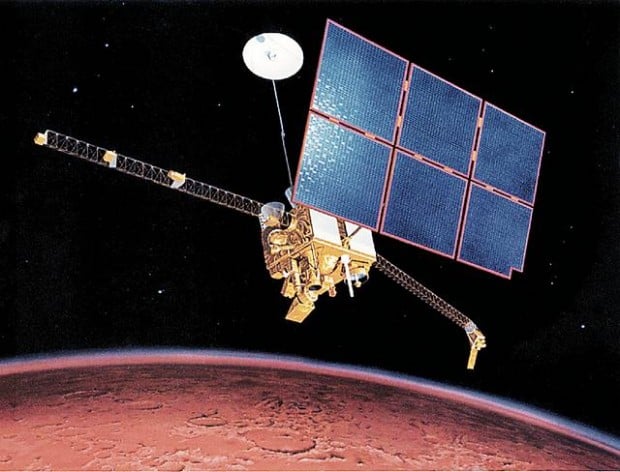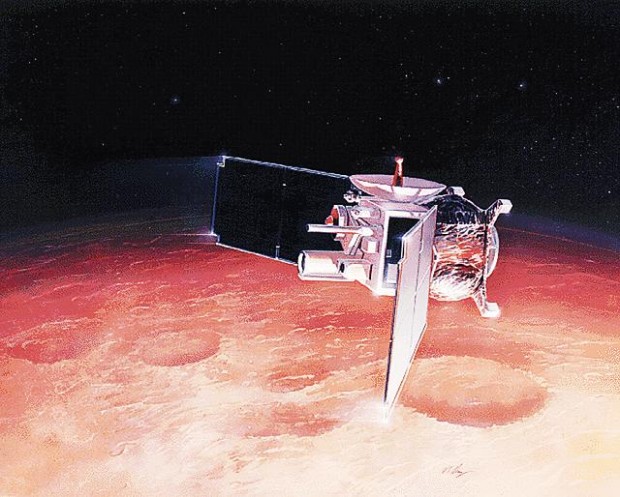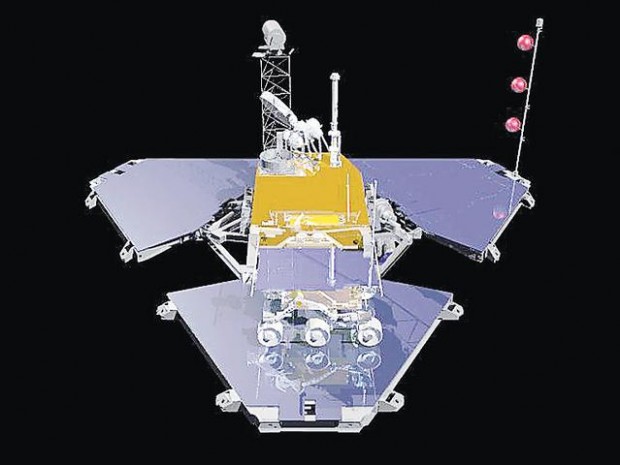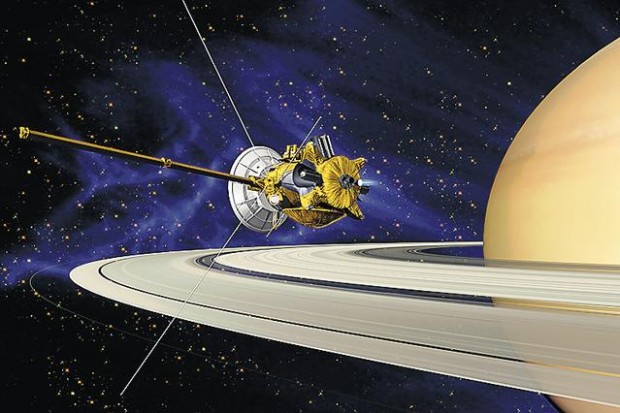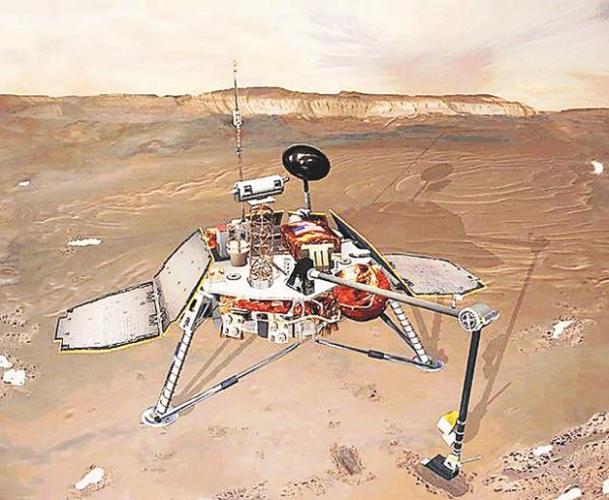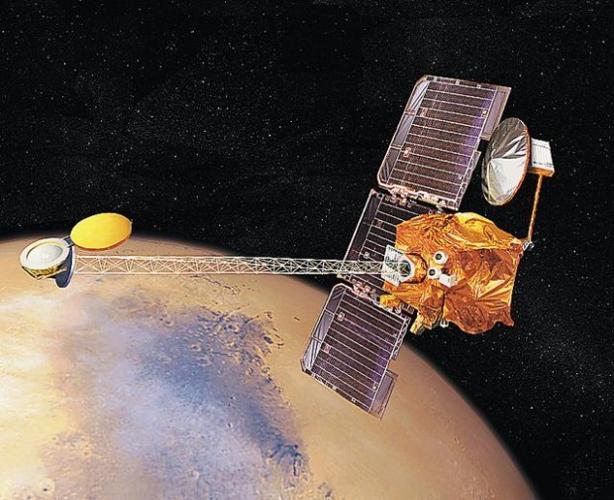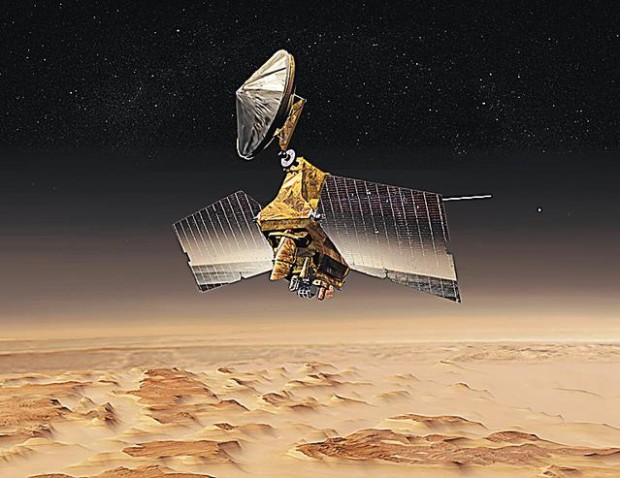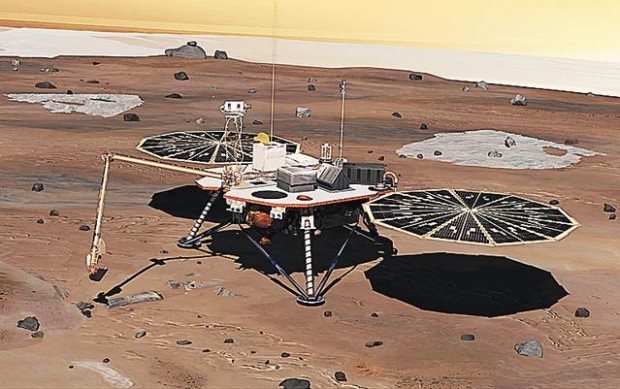Missions
Mars Observer
Launch: Sept. 25, 1992
Mission: The $813 million mission was planned as the first U.S. exploration of Mars since the Viking missions were launched in 1975.
UA involvement: Observer carried the Gamma Ray Spectrometer designed by the UA's William Boynton.
Status: Failed. NASA lost contact with the Observer in August 1993, shortly before it was to enter Mars' orbit.
Mars Global Surveyor
Launch: Nov. 7, 1996
Mission: The first successful U.S. mission to Mars in 20 years, Global Surveyor cost about $216 million and studied the surface and atmosphere from a low-altitude orbit.
UA involvement: Alfred McEwen worked on the Mars Orbiter Camera team, and Arizona State University's Phil Christensen led the Thermal Emission Spectrometer team.
Status: Operated at Mars longer than any other spacecraft, four times longer than originally planned. Went silent in November 2006 of apparent battery failure.
Mars Pathfinder
Launch: Dec. 4, 1996
Mission: Part of NASA's "faster, cheaper, better" approach, Pathfinder was a $265 million lander/rover mission.
UA involvement: Peter Smith led the Imager team for Mars Pathfinder camera, which returned 16,661 images, including iconic panoramas of the Martian surface.
Status: Landed July 4, 1997, and ran through Sept. 27, 1997, returning 2.3 billion bits of information from the camera and instruments studying the atmosphere and soil.
Cassini-Huygens
Launch: Oct. 15, 1997
Mission: Cassini, NASA's largest interplanetary spacecraft, delivered the European Space Agency's Huygens Probe into the atmosphere of Saturn's moon Titan in a combined $3.3 billion mission.
UA involvement: UA scientists built Cassini's Visual Infrared Mapping Spectrometer and Imaging Science Subsystem and Huygens' Descent Imager and Spectrometer and are involved in various other aspects of the mission.
Status: Cassini became the first probe to enter Saturn's orbit in July 2004 and is midway through a four-year mission that will circle the planet and its moons 70 times.
Mars Polar Lander
Launch: Jan. 3, 1999
Mission: One of two failed 1999 missions, the $120 million spacecraft was to land near the south pole and search for subsurface ice and record meteorological conditions.
UA involvement: UA scientists built the Surface Stereo Imager, Robotic Arm Camera and Thermal Evolved Gas Analyzer on the Mars Volatiles and Climate Surveyor instrument suite.
Status: Failed. NASA lost contact with the spacecraft as it was poised to enter the Martian atmosphere in December 1999.
Mars Odyssey
Launch: April 7, 2001
Mission: The $297 million orbiter was originally to be paired with a lander before being renamed Odyssey. Its mission was extended in 2004.
UA involvement: Boynton's updated Gamma Ray Spectrometer analyzes the chemical composition of the Martian surface, and ASU's Christensen leads the Thermal Emission Imaging System.
Status: Still in orbit. Odyssey has transmitted more than 130,000 images and continues to send information about Martian geology, climate and mineralogy.
Mars Reconnaissance Orbiter
Launch: Aug. 12, 2005
Mission: Orbiting with the UA's high-resolution camera, the $720 million mission is searching for evidence of past water on Mars.
UA involvement: Alfred McEwen leads the High Resolution Imaging Science Experiment, or HiRISE, which is the most powerful camera ever sent beyond Earth's orbit.
Status: The orbiter has been in position since March 2006 and will beam information from its instruments until 2008, when it will become a communications relay for other missions.
Phoenix Mars Mission
Launch: Aug. 3, 2007 (scheduled)
Mission: As the first public university to lead a mission to Mars, the UA is directing the $415 million Phoenix lander, which revives instruments from the failed 1999 lander and a mothballed 2001 lander.
UA involvement: Peter Smith is responsible for all science aspects of the mission, which features the UA-built Robotic Arm Camera, Stereo Surface Imager and Thermal and Evolved Gas Analyzer.
Status: Scheduled for launch Friday, Phoenix will travel for nine months and must survive a risky descent to land on Mars by late May 2008.
Telescopes
Hubble Space Telescope
Launch: April 24, 1990
Mission: At a cost of $1.5 billion, Hubble is NASA's flagship space telescope, named after the astronomer who confirmed the theory that the universe is expanding.
UA involvement: UA scientists built the Near Infrared Camera and Multi-Object Spectrometer, which was installed in orbit in 1997.
Status: One of NASA's longest- lasting missions, the Hubble orbits the Earth once every 97 minutes and is expected to continue operating through at least 2013.
Spitzer Space Telescope
Launch: Aug. 25, 2003
Mission: The $1.19 billion mission is the final phase in NASA's Great Observatories Program and features an 0.85-meter telescope and three cryogenically cooled instruments.
UA involvement: The UA's George Reike is principal investigator on the Multiband Imaging Photometer, used to search for galaxies when they first formed.
Status: One of Spitzer's breakthroughs is its unique orbit: It trails behind the Earth as the planet circles the sun, making the telescope slowly drift away from Earth.
Large Binocular Telescope
First light: Oct. 12, 2005 — first mirror
Mission: Located on Mount Graham near Safford, the $120 million scope features twin 8.4-meter mirrors, which were cast by the UA's Mirror Laboratory.
UA involvement: UA is part of a international partnership that includes Italian, German and American astronomers and institutions.
Status: The telescope will be operational with both mirrors this fall.
Sources: NASA, University of Arizona, Large Binocular Telescope Corp.
A roll call of UA missions and instruments that have helped make the university one of NASA's go-to places for space exploration.


